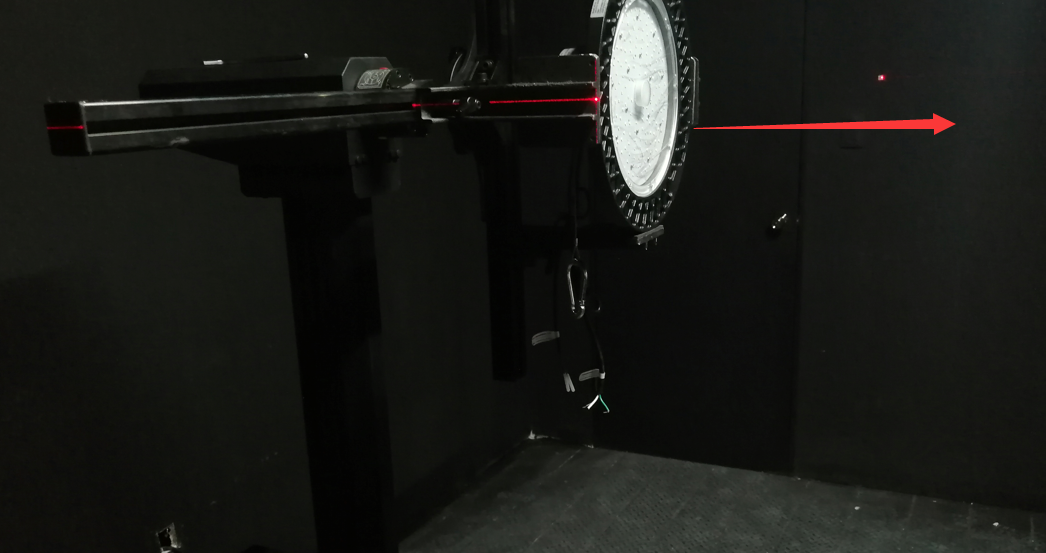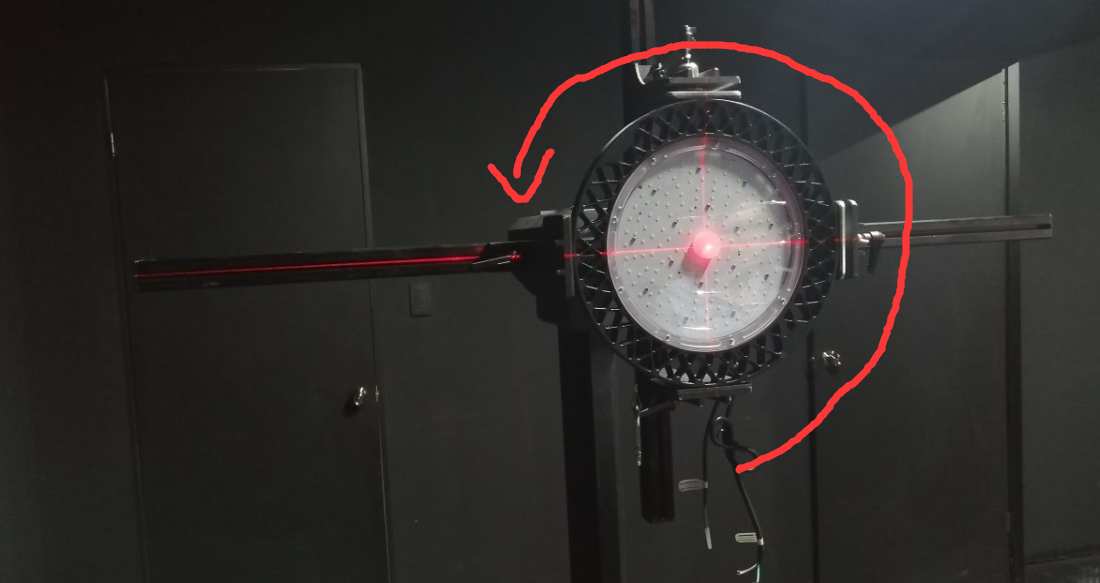LSG-1700 goniophotometer is an automatic goniophotometric instrument for luminous intensity distribution measurement with facility for rotating the light source. It is for industrial laboratory photometric data measurement of luminaires such as LED luminaires, HID luminaires, fluorescent lamps and so on.
• Meets the requirements of CIE-70, IEC, IES LM-79, LM-80, EN13032-1 & GB standards
• Reaching many measurement ways C-Gamma

• The luminaries under test rotates around an angle of (γ)±180°(or 0-360°) and the luminaries rotates around itself with an angle of (C)±180°(or 0-360°)
• Luminosity testing range: Illuminance 0.001lx~10,000lx; Light Intensity 1.0cd~10^7cd (detector)
• The accuracy of angle: 0.2°
• Photometry accuracy: CIE Class 1
• Testing accuracy: 3%(Under Standard lamp); Stray Light: less than 0.2%
• English version software can run on Win7, Win8 or Win10, Win11
Q1: The power factor shown on the digital power meter is a negative value.
A1: Please swap the connections A1 and A2 on the back of the digital power meter.

Digital power meter wire connection
Q2: The total luminous flux test is inaccurate.
A2: Confirm that the calibration is accurate. (Refer to Chapter 3 of the User Manual)
If the sample is an asymmetric lamp, such as a street lamp, ① C(B) angle interval should be set as small as possible, such as 5 degrees, 10 degrees. If the sample is a symmetrical lamp, such as an indoor lamp, C(B) angle interval can be set slightly larger, such as 22.5 degrees, 30 degrees. In any case, ③ Gamma(Beta) angle interval uses 1 degree.
During C-Gamma test, if the illumination angle of the sample lamp is greater than 180 degrees, ④ Gamma test angle range needs to be set to 0 to 180 degrees.

Angle settings for goniophotometer measurement
Make sure the temperature of the darkroom is around 25 degrees.
During the test, please make sure that the sample lamp is turned on and stable, and all other lighting in the darkroom is turned off. Please make sure that the darkroom is built and decorated completely according to the design drawings, and there is no reflection or light leakage inside.
Q3: Abnormal shape of light intensity curve.
A3: Please make sure that the light-emitting surface of the lamp is installed in the right direction. If the direction is crooked, it will definitely lead to an abnormal light intensity distribution curve.

Pay attention to the lamp direction on the the goniophotometer
If the lamp under test is an asymmetric lamp, each C angle of the sample may have a different light intensity distribution curve. Different ways of installing it on the fixture will result in different light intensity curves.

Pay attention to the lamp angle on the goniophotometer
Q4: Street light test curve is abnormal.
A4: Street lights are directional. If the installation direction is incorrect, some test parameters such as the street light CU curve may be abnormal. As shown in the correct installation direction, C0 direction, the street light pole should be facing upwards.

How to install a street light on the goniophotometer
Lisun Instruments Limited was found by LISUN GROUP in 2003. LISUN quality system has been strictly certified by ISO9001:2015. As a CIE Membership, LISUN products are designed based on CIE, IEC and other international or national standards. All products passed CE certificate and authenticated by the third party lab.
Our main products are Goniophotometer, Integrating Sphere, Spectroradiometer, Surge Generator, ESD Simulator Guns, EMI Receiver, EMC Test Equipment, Electrical Safety Tester, Environmental Chamber, Temperature Chamber, Climate Chamber, Thermal Chamber, Salt Spray Test, Dust Test Chamber, Waterproof Test, RoHS Test (EDXRF), Glow Wire Test and Needle Flame Test.
Please feel free to contact us if you need any support.
Tech Dep: Service@Lisungroup.com, Cell/WhatsApp:+8615317907381
Sales Dep: Sales@Lisungroup.com, Cell/WhatsApp:+8618117273997
Your email address will not be published. Required fields are marked *